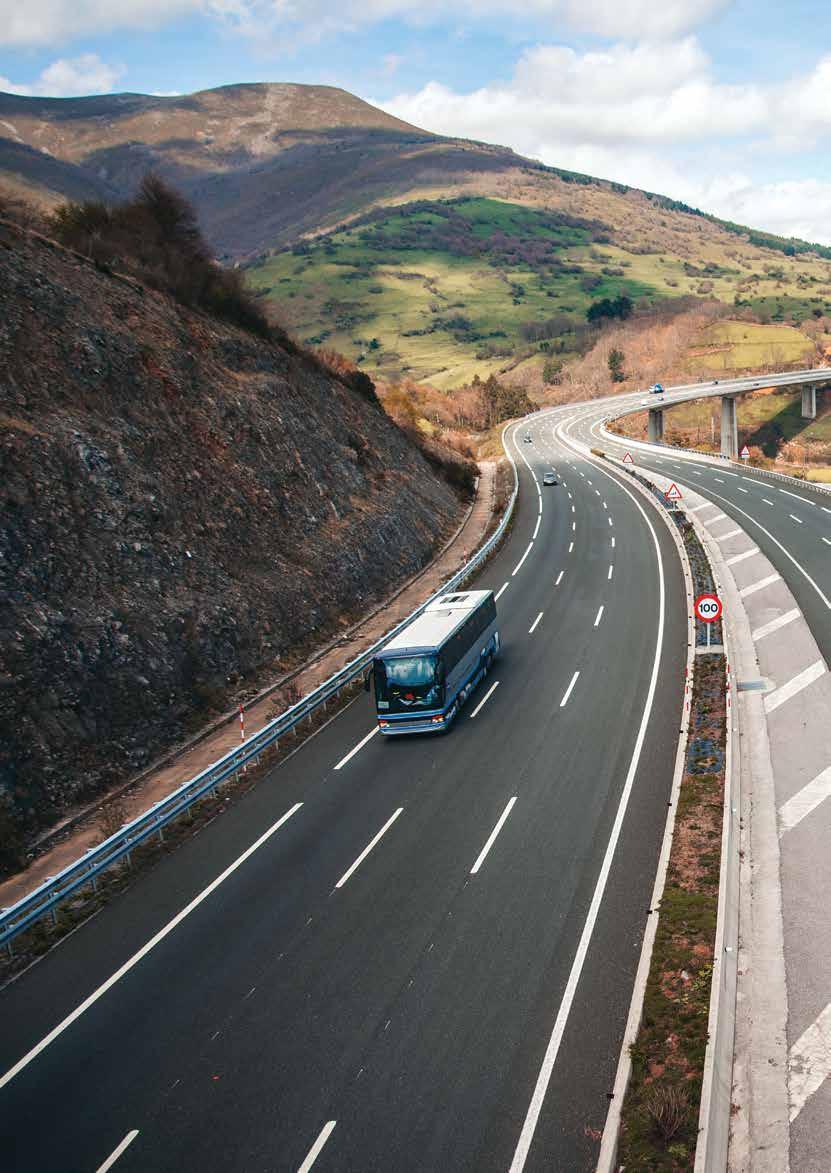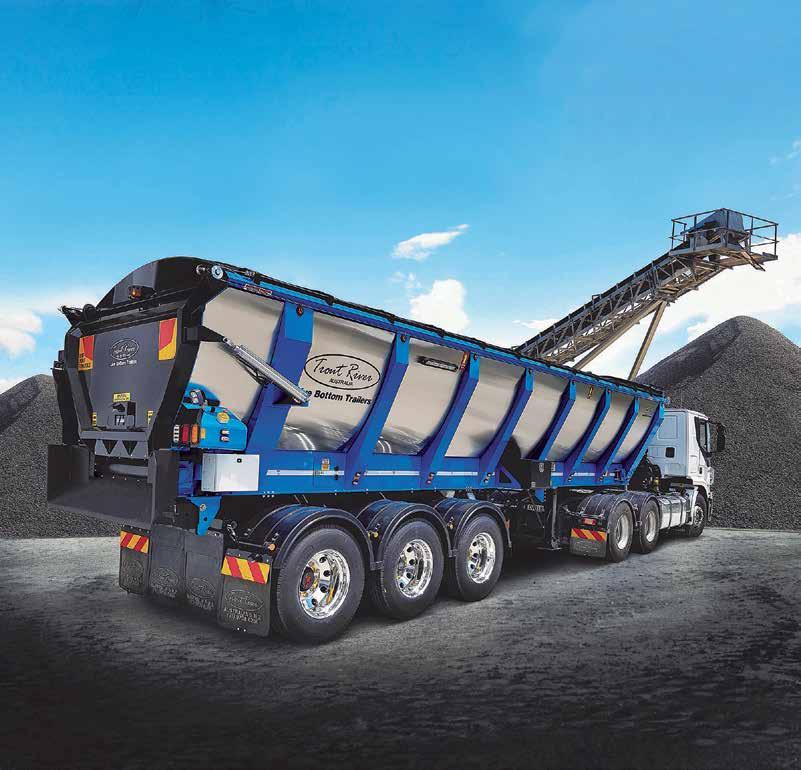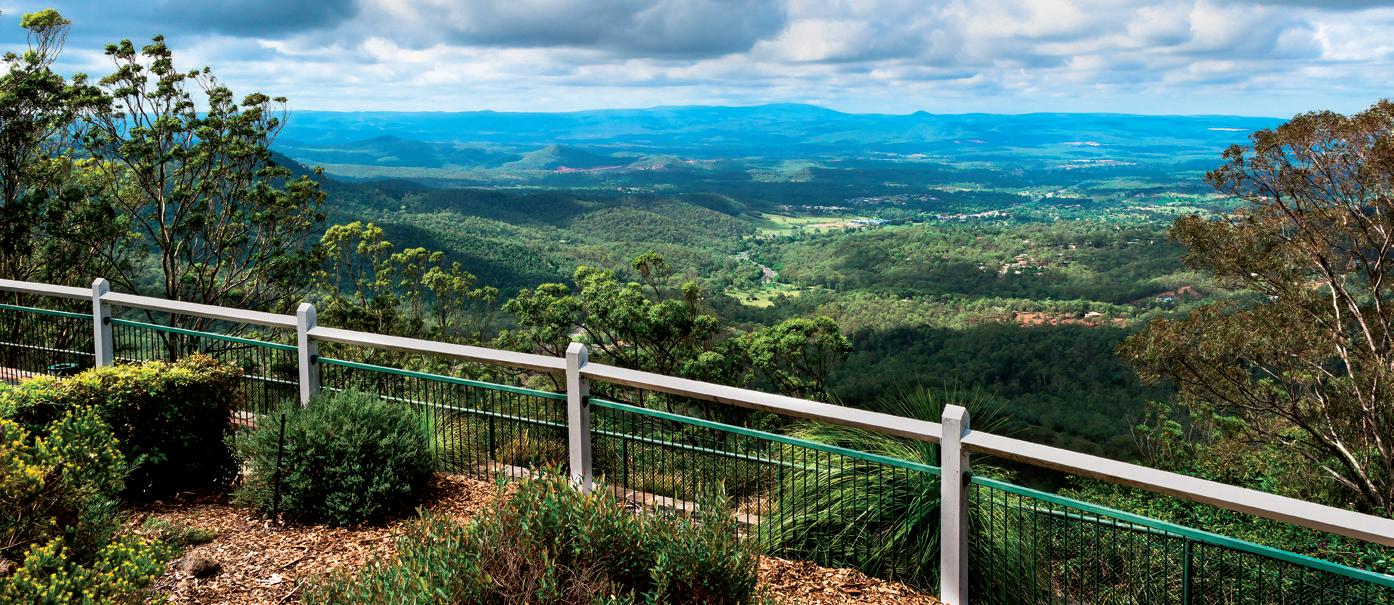
10 minute read
News
TOOWOOMBA SECOND RANGE CROSSING OPENING DATE SET
The Toowoomba Second Range Crossing, a $1.6 billion infrastructure investment project, officially opened on 8 September 2019.
The upgrade aims to transform the national freight network in the Toowoomba and Lockyer Valley regions in Queensland.
The project involves building four lanes from the Warrego Highway east interchange to the west interchange, along with grade separated intersections and connections on various parts of the road.
It also includes an around 30-metre deep cutting at the top of the range to ensure all vehicles can pass through and an 800-metre-long viaduct over the existing Queensland rail lines, as well as the construction of arch bridges to continue the New England highway over the cutting.
The project was delivered by Nexus Infrastructure, a consortium comprising of Transfield Services, Plenary Group, Cintra Infraestructuras Internacional S.A., Acciona Concesiones S.L., Acciona Infrastructure Australia and Ferrovial Agroman Australia.
Deputy Prime Minister and Minister for Infrastructure, Transport and Regional Development Michael McCormack said the project would significantly reduce travel times across the range and deliver a safer, more efficient connection to ports and markets.
“Connecting the Warrego Highway at Helidon Spa in the east to the Gore Highway at Athol in the west, the new Toowoomba Second Range Crossing will form a vital strategic link within Australia’s national freight network and Toowoomba’s emerging intermodal network,” Mr. McCormack said.
Queensland Minister for Transport and Main Roads Mark Bailey said the project
The crossing will take pressure of local roads.
would make life easier for residents of Toowoomba and Lockyer Valley areas.
“With trucks being redirected away from Toowoomba’s central business district, pressure will be taken off local roads,” Mr. Bailey said.
“The opening of the crossing in September will be the moment that the decades of dedication and hard work from so many people to see this road built is finally achieved.”
To celebrate the opening of the Toowoomba Second Range Crossing a community day was held on 7 September and a marathon was run on 8 September.
SYDNEY METRO REUSES SANDSTONE

Excavated sandstone from Sydney Metro tunnels will be reused to build the new Western Sydney International Airport, as both infrastructure projects begin to take shape.
More than 500,000 tonnes of sandstone will be transported from Metro tunnelling sites to the Western Sydney International Airport site.
Western Sydney Airport Chief Executive Officer Graham Millett said more than 148,000 tonnes of sandstone had already been transported.
“This high-quality sandstone will be used as a high-strength foundation to support the construction of the runway, taxiways and roads on site,” Mr. Millett said.
“This is a great example of how we can make the most of Sydney’s infrastructure boom, to not only save taxpayer funds but also cut down on waste.”
Mr. Millett said Western Sydney International Airport is committed to sustainability, efficiency, reusing resources and reducing carbon emissions.
“Building the airport is one of the biggest earthmoving challenges in Australian history, but we’ve already moved more than 1 million cubic metres of earth across the 1780-hectare site,” Mr. Millett said.
Sydney Metro aims to reuse 100 per cent of the crushed rock produced during the excavation of the 15.5-kilometre twin tunnels between Chatswood and Marrickville.
WORLD CLASS SOLUTIONS FOR CONCRETE & INFRASTRUCTURE

SIMEM Concrete Batching Plants
Gough Industrial Solutions partners with both SANY and SIMEM to deliver exceptional global technology, local expertise and lifetime support to the local concrete & infrastructure industries.
DYNAMIX ® Concrete Agitators
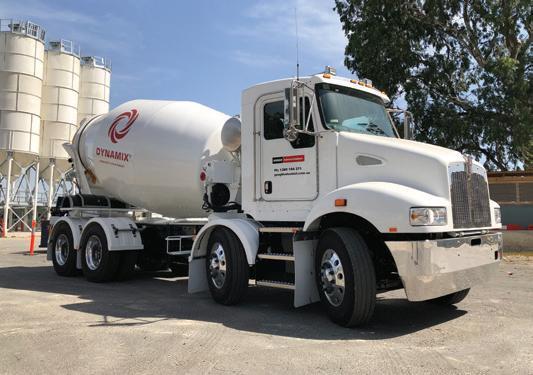
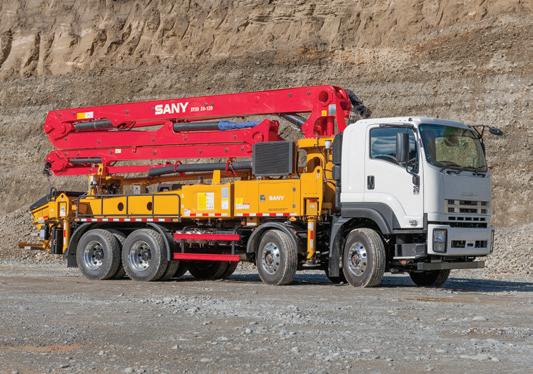
SANY Pumping Solutions

SIMEM Concrete Batching Plants
SANY Concrete Line Pumps
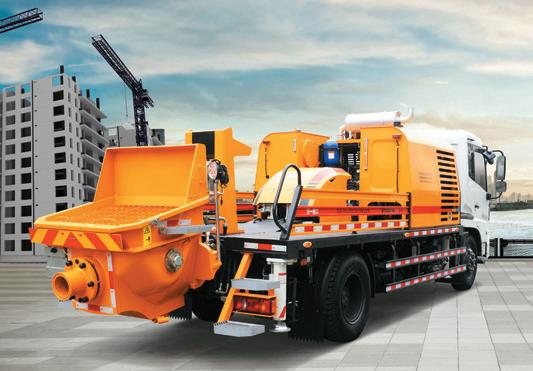

SANY Concrete Placing Booms
For industry leading solutions - talk to our team today.
Horst Hendrich National Key Account Manager 0477 400 099 Horst.Hendrich@goughindustrial.com.au Terry Breen Key Account Manager 0455 325 231 Terry.Breen@goughindustrial.com.au
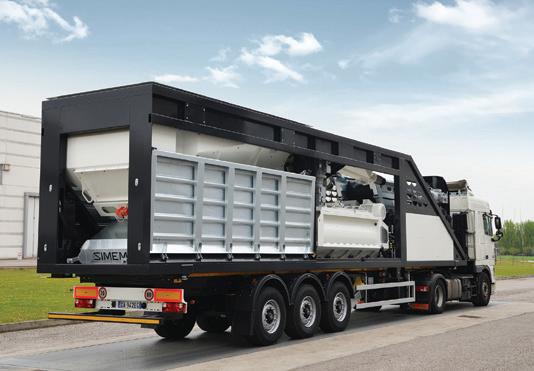
SIMEM Fixed & Mobile Plant Solutions Delivering Exceptional
Service & Support through our National
Branch Network
QLD TO SPEND $4.9B ON INFRASTRUCTURE
The Queensland Government’s State Infrastructure Plan 2019 Update outlines the second highest pipeline of public and private infrastructure projects in the country.
State Infrastructure Minister Cameron Dick said the plan highlights significant private investment throughout Queensland and the lowest infrastructure underspend in a decade.
“The next four years will see a $49.5 billion infrastructure investment across Queensland, including $12.9 billion over the next 12 months, which will support up to 40,500 local jobs,” Mr. Dick said.
“More than 160 infrastructure proposals are in the planning phase of the 2019 pipeline, including 67 new projects, and 40 proposals have moved from planning into delivery since 2018 and will be delivered in the next four years.”
According to the offical update report, state and local government spending on infrastructure is rising and emerging as a key driver of Australia’s economic growth.
“Transport projects currently account for about one third of all Queensland activity and are largely led by the state government, with the Cross River Rail project now under construction,” the report reads.
“There are also approximately $29 billion worth of public infrastructure works in the planning phase.”
Mr. Dick said the state government has focused keenly on reducing capital program

Queensland’s infrastructure plan is the second largest in the country.
under-expenditure since 2015.
“Our careful management will see us achieving a near-zero per cent underspend for 2018-19, the best performance in 10 years,” Mr. Dick said.
“Since 2015, around 207,000 new jobs have been created for Queenslanders, and this updated State Infrastructure Plan highlights there are plenty more on the way.”
According to Mr. Dick, 60 per cent of this year’s infrastructure budget is being invested outside Greater Brisbane, where it will support around 25,500 jobs.
“Our strong infrastructure program underpins and unlocks private sector investment, and our state’s $147 billion public and private infrastructure pipeline is the second largest in Australia, as reported in the March 2019 Deloitte Access Economics Investment Monitor,” Mr. Dick said.
“The state government is creating the right conditions to assist and accelerate more private investment and quickly guide the right projects smoothly from concept to robust business case and beyond.”
Infrastructure Association of Queensland CEO Priscilla Radice said industry welcomed the annual update, as it provided certainty around the year’s $12.9 billion infrastructure investment.
“The State Infrastructure Plan is a crucial investment blueprint for the state – it gives both industry and investors confidence in this market and assures the community of the government’s commitment to deliver on jobs,” Ms. Radice said.
AUSTROADS UPDATES GUIDE TO ROAD TUNNELS
Austroads has updated its Guide to Road Tunnels to support road agencies when retrofitting, refurbishing or replacing assets in tunnels.
ARRB Associate and Principal Author Les Louis said there was an increasing need for tunnels to be retrofitted rather than maintained, due to excessive congestion, deteriorating structures, technological improvements and demand for higher standards of safety.
“Part 4: Retrofitting Tunnels, provides guidance on when refurbishment is needed and the types of refurbishment that can be considered,” Mr. Louis said.
“The guide provides processes for developing project requirements, geometric considerations relating to cross-sections and information on traffic management functions including signs and lighting.”
According to Mr. Louis, part four also contains guidance on fire protection and evacuation systems, mechanical systems including pumps and lifts, electrical and electronic components including tunnel management systems and power supply and energy efficiency.
“Principles and standards are based on experience across Australasia and in other countries where tunnels have been operating for many years,” Mr. Louis said.
“Practices from other countries have been considered in the context of Australian and New Zealand conditions, experience and legislative requirements.”

ARRB REVIEWS THE USE OF VEHICLE TYRES IN BITUMEN
The Australian Road Research Board (ARRB) is recommending further research into the use of passenger vehicle tyres in bitumen production.
ARRB Senior Professional Leader Guy Hand said Victoria’s Transport Department, formerly VicRoads, engaged ARRB to undertake a literature review on the subject.
“Using more end-of-life tyres in road construction is a known way to curb significant environmental challenge for Australia. The question is, how do we make that happen?,” Mr. Hand said. “One possibility is to engage the use of end-oflife car tyres.”
Most crumb rubber repurposed into Australian road construction currently comes from end-of-life truck tyres.
According to Mr. Hand, truck tyres are predominantly composed of natural rubber, whereas car tyres contain a high proportion of synthetic rubber, as well as a nylon component.
“It is not well understood whether synthetic rubber will behave in bitumen in the same nature that natural rubber does,” Mr. Hand said.
“No data from an Australian context is available to establish the compatibility and performance of synthetic rubber in bitumen.”
Mr. Hand said the key objective of the review is to understand the current specifications of crumb rubber sourced by other road agencies, and the market availability and processing requirements of passenger vehicle tyres.
ARRB was additionally asked to identify the benefits and limitations of using passenger vehicle tyre crumb rubber as a road material in asphalt and sprayed seals.
Most crumb rubber repurposed into road construction comes from truck tyres.

“There are also barriers for recycling car tyres to be considered, such as economic, environmental and processing challenges,” Mr. Hand said.
“With the Victorian Government’s focus on increasing the use of recycled materials in road construction, this literature review will help inform all stakeholders on the issues associated with the use of passenger vehicle tyres in bitumen.”
SIME DARBY ACQUIRES GOUGH GROUP’S AUSTRALIA AND NEW ZEALAND OPERATIONS
The Gough Group has announced it has entered into a conditional agreement to sell its New Zealand and Australian operations to Sime Darby Berhad.
The agreement includes its Caterpillar dealership and transport businesses.
The decision follows a strategic review process to consider the options for the long-term growth of the Group which commenced in 2018.
Gough Group Chairman Keith Sutton said through the strategic review process the Board and shareholders focused on the best interests of the company, its customers, suppliers and employees.
“We are confident that, under Sime Darby’s ownership the outlook for the business will be strengthened, service to customers enhanced and opportunities for our employees improved,” Mr. Sutton said.
“Although it is sad to see the end of the almost 100-year legacy of Gough family ownership, all our stakeholders should be excited about the future of the business.
The transaction is conditional upon approval by the Overseas Investment Office and other standard pre-conditions.
Gough Group Chief Executive Officer Liz Ward said the new owners have a wealth of industry knowledge.
“They have a clear commitment to our people and customers, which was very important to the shareholders and the board,” Ms. Ward said.
Tracy Gough founded Gough, Gough & Hamer Limited in 1929, securing the Caterpillar dealership in 1932.
A diverse group, it incorporates 10 distinct businesses and represents premium global brands such as Caterpillar, WABCO, SAF and Palfinger.
Sime Darby Berhad is partner to some of the world’s best brands in the industrial and motors sectors and is one of the largest Caterpillar dealers globally.
Headquartered in Malaysia and listed on the Kuala Lumpur Stock Exchange, it has a workforce of more than 20,000 employees and operations in 18 countries and territories across the Asia Pacific region.
A NEW WAY TO BUILD




